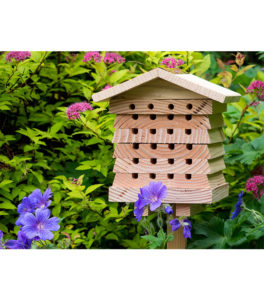January 2022
Interested in keeping bees but want something with an extremely low effort level, and investment? One option is to start with mason bees. At the very simplest, this could be drilling some holes in a piece of scrap wood, but that’s not what I am about to recommend.
If you really milk this activity, it may take a total of about four hours. . . a year. The start up costs are from free, to maybe $200 if you want to crazy. $100 is about what I spent.
Why mason bees? These little ones are great. Comparing them to honeybees, which is what I’m guessing most people think when they think of bees, there are some significant differences. Mason bees are very docile on the aggressiveness scale, if the average honey bee is a 5 and different honey bees may range for 3-7, these are a 0, ok maybe a 1. The do have a stinger at least the female’s do, but I have never been stung and they say that they only sting when squeezed or trapped. They are also more efficient pollinators than honeybees. On average, mason bees have a 95% pollination rate, whereas honeybees have a 5% pollination rate. They also solitary bee’s so they do everything individually not like a honey bees in a hive. They do collect pollen but they don’t store nectar or make honey. So if you want honey these are not the right kind of bees as Winnie-the-Pooh would say. But if you like flowers, fruits and vegetables, these might be just what you are looking for.
So without further ado, here is how I kept mason bees. I got a couple of mason bee houses at our local “little bit of everything” store, JAX, and unless you live in Colorado, you probably don’t know what that is. JAX is part hardware, part ranch supply, part outdoor clothing, part army surplus and more store (and you will probably hear more about them in future posts, I love JAX).

The houses were made by Wildlife World and I have seen them on a number of other sites. We got a shipment of mason bees from Crown Bees (if you want a site that knows native bees, that is a good one) and released them at the appropriate time in the spring. Mason bee cocoons should be released in spring, with all cocoons having been released by mid-May and can be harvested from October to December.
The harvesting is where the time is concentrated. Basically you take the little house apart and gather the cocoons, wash them and then put them in the refrigerator until the spring. In the spring once is it consistently above 50 degrees or so (10C for you metric folks), put them outside and let them do their thing.
If you are interested in learning more about keeping mason bees, check out the Crown Bees web page for information and supplies.
Here are some links:
www.jaxgoods.com
www.wildlifeworld.co.uk/products/solitary-bee-hive
www.crownbees.com